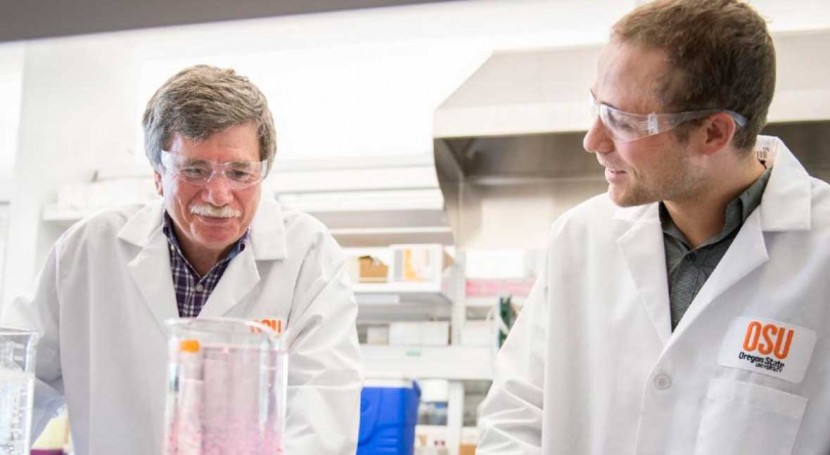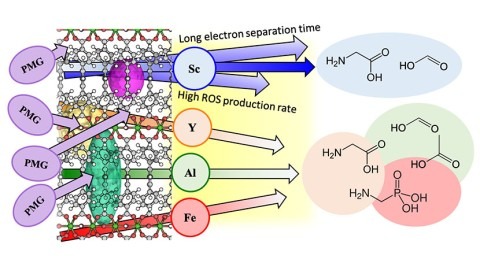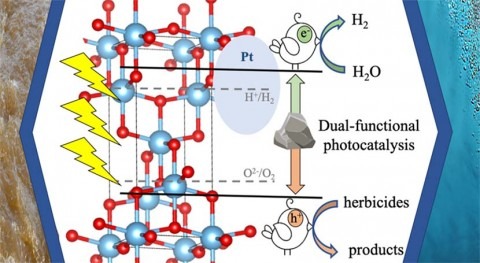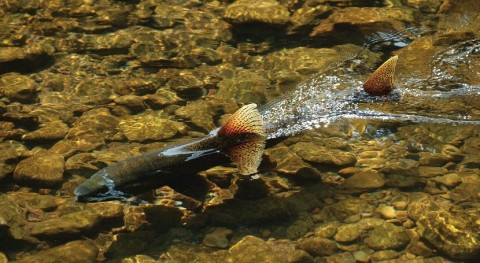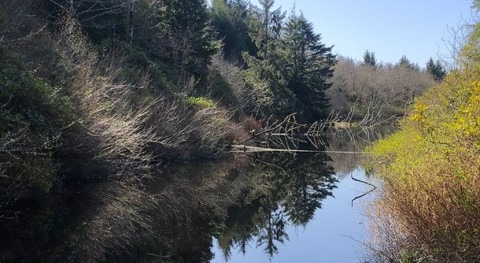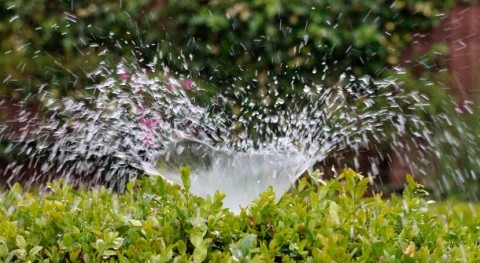Beads that contain bacteria and a slow-release food supply to sustain them can clean up contaminated groundwater for months on end, maintenance free, research by Oregon State University shows.
The hydrogel beads, which have the consistency of gummy candy and are made with an ingredient used in processed foods, hold the promise for sustained cleanup of groundwater contaminated with dangerous and widely used volatile organic compounds; many of the compounds are listed by the Centers for Disease Control and Prevention as likely human carcinogens.
At multiple locations around the country, the chemicals are present at concentrations that far exceed state and federal standards for safe drinking water.
Among the contaminants addressed in the study are 1,1,1-trichloroethane, cis-1,2-dichloroethene, and 1,4-dioxane — degreasers commonly used by industry and the military. The chemicals can infiltrate groundwater through leaky underground storage tanks or runoff, or by simply being dumped on the ground as they were in past.
The new decontamination method, developed through a collaboration between the OSU College of Engineering and North Carolina State University, works because the microbes produce an enzyme that oxidizes the toxins when groundwater contaminants diffuse into the beads.
The result is a transformation of the contaminants into harmless compounds.
“We’ve created a process called long-term aerobic cometabolism, which is an enclosed, passive, self-sustaining system for groundwater remediation,” said OSU’s Lew Semprini, distinguished professor of environmental engineering and principal investigator on the study. “The beauty of this is that everything happens inside the beads.”
Current practices, Semprini explains, call for gaseous growth substrates such as propane and methane to be added directly to the subsurface. The substrates nourish indigenous microbes, which in turn produce enzymes that transform the contaminants to non-toxic byproducts.
Often, however, the growth substrates chemically compete for those crucial enzymes, which significantly inhibits the transformation process.
The new system eliminates that competition, freeing all of the enzyme to oxidize contaminants.
“We’ve flipped the paradigm on its head by putting the right microorganism inside hydrogel beads and supplying it with a slow-release food source,” Semprini said. “To my knowledge, this is the first time it’s been done.”
The study appears in Environmental Science: Processes & Impacts.
Semprini and his research team co-encapsulated the bacteria culture Rhodococcus rhodochrous and a slow-release growth substrate within hydrogel beads that they produced in the lab. The cylindrical beads, made of gellan gum, a common ingredient in processed foods, are 2 millimeters long.
As groundwater flows by the beads, the contaminants diffuse into the beads, where the slow release substrate reacts with groundwater to produce alcohol that sustains the Rhodococcus bacteria. The bacteria contain a monooxygenase enzyme that transforms the contaminants into harmless compounds, including carbon dioxide, water and chloride ions.
The purified water and the byproducts then diffuse out of the beads and rejoin the groundwater plume.
In bead-filled test columns supplied with a continuous flow of contaminated water, the system functioned continuously for more than 300 days (and counting) on the original growth substrate.
Semprini found that the beads remove more than 99% of the contaminants, and their concentrations declined from several hundred parts per billion to less than 1 part per billion.
The system’s longevity will depend mainly on how long the bacteria live, which is a factor of how long the growth substrate lasts. That has yet to be determined.
“It’s a question for future research,” Semprini said. “How do we make beads that last many years, or how do we develop systems that can easily be replaced?”
Current cometabolic remediation methods require regular additions of growth substrates to ensure that key microorganisms flourish, and that necessitates regular site monitoring, biochemical adjustments and related costs.
The next step is to scale up the system and conduct pilot studies in the field.
Semprini envisions several possibilities for deploying the beads. One option is mixing beads directly into contaminated subsurface material. Another is to dig a trench in the path of groundwater flow and fill it with beads, creating a permeable reactive barrier. A third possibility is packing beads into reactors, a simple form being mesh bags, that can be placed in wells.
“Everybody favors sustainability in this type of system: Can we just have something working in the subsurface without much maintenance?” Semprini said. “I think we’ve achieved that.”


